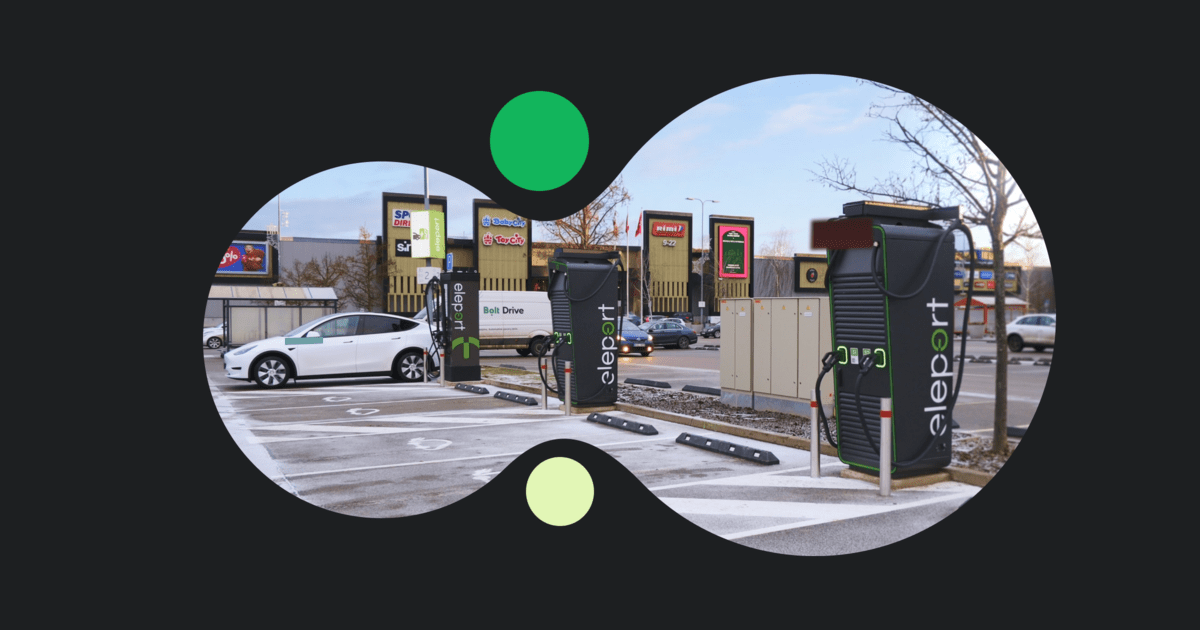You’ve probably never used the term, but you’ve almost definitely driven one.
So, what is an ICE vehicle? Practically, an ICE vehicle is any vehicle that creates motion by burning fuel inside the engine. The ICE vehicle meaning is technical, but the idea isn’t complicated. It’s a system that’s powered most cars for over a century and still defines how most people get around today.
For many drivers, ICE vehicles aren’t just about technology—they’re about habit. The process is familiar: fill the tank, turn the key, and drive. There’s not much of a learning curve, no range anxiety, no need to rethink how or where you travel. That ease is part of why these vehicles are still the default choice in much of the world.
(If you’re considering alternatives, our EV charging guide offers a useful overview of how electric vehicles fit into that transition.)
ICE Vehicle Meaning: Breaking It Down
The ICE vehicle meaning isn’t just about what’s under the hood—it’s about how the world was built around a single engine design. For more than a century, the internal combustion engine has shaped roads, fuel stations, repair shops, even the way cities expand.
At its core, an ICE vehicle runs by igniting fuel inside the engine to produce motion. But what matters now is how deeply that system is embedded into everyday life. It’s not just cars—we’re talking delivery fleets, buses, emergency vehicles, long-haul trucks. In many places, it’s still the only viable option.
So, what does ICE vehicle stand for? Technically, “internal combustion engine.” But in practice, it stands for familiarity, convenience, and an entire infrastructure that’s only now beginning to shift.
How an ICE Engine Works — A Quick Look Inside

You don’t need to be a mechanic to understand the basics. Internal combustion has four stages: intake, compression, combustion, and exhaust.
Picture this: the engine pulls in a mixture of fuel and air. It squeezes that mixture tightly in a small chamber. Then, a spark (or just heat in a diesel engine) ignites it. Boom—the resulting pressure pushes down on a piston. That motion, repeated rapidly across several cylinders, spins the crankshaft, which ultimately drives the wheels through the transmission.”
While modern engines are far more advanced than those of the early 1900s, the fundamental cycle remains the same. Today’s engines often include technologies like turbochargers, direct injection, and advanced emissions systems to improve efficiency and reduce pollutants.
If you’re curious to go deeper into the mechanics, the French research organization IFP Énergies Nouvelles (IFPEN) offers an excellent technical breakdown of how modern combustion engines work.”
Examples of ICE Vehicles You Know
The label “ICE” might sound abstract, but you encounter these vehicles daily. Here are some everyday ICE vehicle examples:
- A petrol Toyota Yaris or Ford Fiesta
- A diesel Ford Transit used in logistics
- A hybrid like the Toyota Prius, which switches between electric and combustion, but can’t be charged through a plug
- A plug-in hybrid, such as the Volvo XC60, retains a combustion engine but also features a larger, rechargeable battery for city drives.
These are all types of internal combustion vehicles still widely used across Europe and beyond.
Hybrids have, in fact, taken over as the largest car drivetrain segment in Europe. As of mid-2025, 35.3% of all new car sales in Europe were hybrids, while petrol cars had a 28.1% share of the market.
Fully battery electric vehicles have risen to the third spot with 17.1% market share, and plug-in hybrids took up 8.5% of all sales. Diesel car sales have been in steady decline, now making up just 8.3% of all cars sold in Europe as of mid-2025.
While the terminology around plug-in hybrids (PHEVs) are sometimes bundled with battery-electric vehicles (BEVs) and jointly called electric vehicles (EVs), in reality all of these mentioned above, with the exception of battery-electric vehicles, can be called an ICE car due to having the internal combustion engine component.
So if you’ve ever asked, “What is an ICE car?”, chances are, you’ve already owned one.
Why ICE Vehicles Still Dominate Roads

With all the buzz around EVs, it may be surprising that ICE vehicles still account for most global car sales. “Currently, around 14.5% of global car sales are fully electric, meaning only about one in seven cars sold does not use a combustion engine.” The reason isn’t always preference. The world is still designed for them. Fuel stations are easy to find, and mechanics know how to repair them. In many regions, especially rural areas, charging stations remain few and far between. That makes traditional combustion vehicles not just familiar but also convenient, part of what defines the ICE vehicle meaning today.
Perception plays a role, too. Many drivers unfamiliar of what it is like with driving an EV worry about running out of battery without access to a charger. Until charging becomes as easy and common as filling up a tank, people will stick with what they’re familiar with. Car culture currently still adds to this. Motorsports, tuning scenes, and classic car clubs have always centred around combustion engines. That tradition doesn’t disappear overnight. But it is starting to shift, along with the cars themselves.
Cost also matters. EVs still cost more to buy upfront, while used ICE vehicles are more affordable. For many households, the lower upfront cost makes the choice practical, not just environmental. Until EV prices drop further, ICE vehicles will remain the more accessible option for everyday drivers.
The Problem: Efficiency and Emissions
Though practical, ICE vehicles often lack energy efficiency. Petrol engines convert 25–30% of the fuel’s energy into motion. Diesel engines perform slightly better at 30–40%. The rest is lost as heat, noise, and friction. In contrast, electric motors convert more than 80 per cent of stored energy into actual movement.
Another issue is pollution. Even the cleanest internal combustion vehicles release carbon dioxide and other harmful gases. And while electricity generation still, in large part, also comes from fossil fuel sources in many regions, the clear downside of the emissions with ICE vehicles is the location where it is emitted into the air. These are called tailpipe emissions, and with ICE vehicles we are all breathing it in next to the cars. As rules tighten—especially across Europe—some cities now limit or even ban these vehicles by enforcing low-emission zones in certain parts of the city These cities already include London, Berlin, Paris, Warsaw, and soon also in Riga.
For the larger environmental perspective, we should consider overall emissions, including from the production of the vehicle itself. It’s clear that ICE vehicles don’t have batteries they need produced, so the overall production emissions are lower at the point they leave the factory. But that extra emission is paid off sooner than most people would think –a recent 2025 study by the International Council on Clean Transportation (ICCT) shows that it only takes 17,000 kilometres of driving an EV over ICE to offset the start, which most people already do within one or two years. After that, ICE vehicles keep polluting significantly more per every kilometre driven than EVs.
Per the study, across Europe, battery electric vehicles (BEVs) emit about 63 grams of CO₂ equivalent per kilometre over their full life cycle — roughly 73% less than the 235 grams per kilometre produced by average petrol ICE vehicles. On renewable electricity, that gap can widen to nearly 78%.
The environmental cost of sticking to an ICE vehicle is growing harder to ignore.
What About Costs and Maintenance?
An ICE vehicle may cost less upfront, especially in the used market. But long-term expenses add up.
You need regular stops at the fuel station, oil changes, air filter replacements, and timing belt fixes. Put simply, ICE vehicles have a lot more moving parts to tend to. In contrast, even though some occasional service needs remain, electric vehicles need much less routine care. Over time, traditional engines often require more money and attention.
Governments also continue to raise emissions-related taxes. If you drive an older ICE model in a big city, you might already pay just to enter low-emission zones. These costs, combined with higher fuel prices and maintenance, make the total cost of owning an ICE vehicle higher than it might first appear.
ICE Technology in 2025: Still Here, but Changing
In 2025, cars with internal combustion engines will still be a big part of daily life in Poland and the Baltic countries. They don’t have many restrictions in our regions yet, they’re familiar, and still lining dealership lots. For many people, especially where charging stations are still catching up, they’re simply the practical choice.
But the shift toward electric is picking up speed. Norway’s mostly gone electric already with 89% of all vehicles sold purely electric in 2024, and countries like Germany and the Netherlands plan to stop selling new gas and diesel cars by 2035. That may seem a long way off, but it’s already changing how carmakers think and build. Even here, in Poland and the Baltic, you can feel the change starting—slowly but surely.
Why Infrastructure Matters More Than You Think
If electric mobility is the future, and we are certain it is, infrastructure is the key to unlocking it. Companies like Eleport are building this foundation. By installing chargers in city centres, on highways, and in rural areas, they’re making EV ownership viable for more people, not just in major metros but everywhere. The EV charging guide explains how these networks work and why they’re central to shifting away from reliance on ICE.
Once charging becomes as easy and reliable as filling up a tank, many of ICE’s remaining advantages disappear.
Conclusion
So, what is an ICE vehicle? It isn’t just a machine—it’s a symbol. For over a century, it represented freedom, progress, and connection. It still does in much of Europe, including Poland and the Baltic. You see it on daily commutes, weekend road trips, and delivery routes through towns and countryside. It’s fast, familiar, and supported by a well-established network of fuel stations and repair shops.
But even powerful symbols fade.
The ICE vehicle meaning is beginning to shift. It no longer stands just for how a car works—it reflects an older system built around convenience, habit, and infrastructure. Going EV isn’t just a story of replacement—it’s a story of transition.
And one day, we may view internal combustion engine vehicles the way we see steam trains or landline phones: once transformative, now simply a part of history.





